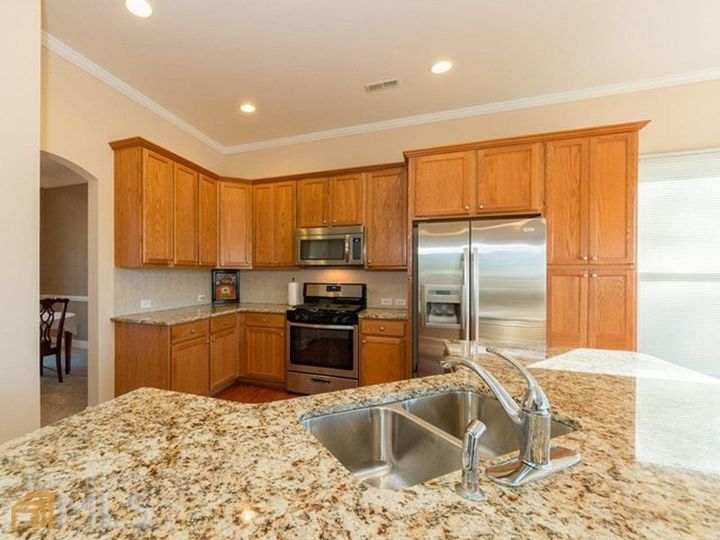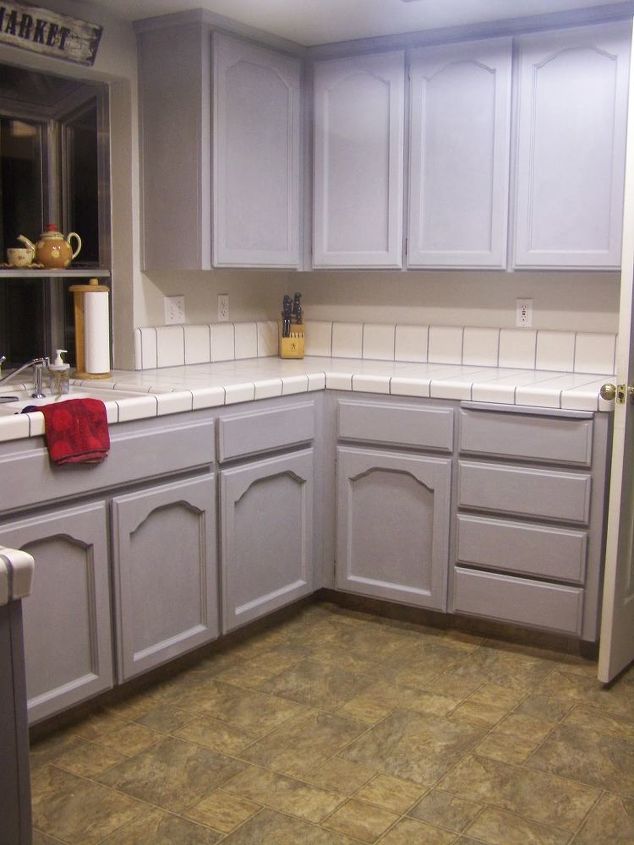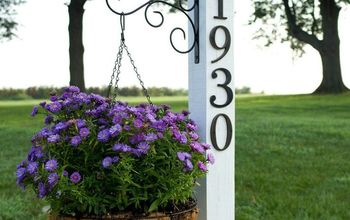What's so great about Chalk Paint?

-
Probably the biggest drawing card for chalk paint is the ability to skip the sanding and priming, which is normally advised for traditional paint like latex. And, even with no up front preparation, chalk paint is suppose to stick to anything. But... even though you are saving time at the beginning of the project by not having to do any prep work, there is a step at the end of using chalk paint that, to me, is almost worse than sanding and priming. WAXING. The chalk paint dries with a very flat, matte finish and it needs to be sealed to protect it, as well as give some luster and depth to the matte finish. Waxing is what the chalk paint companies recommend. I don't like the waxing part and depending on what color you are waxing over, I've read where some people have had considerable difficulty buffing the wax out to get a nice, uniform streak-free finish, particularly over dark colors like black. A top coat like poly can be used instead of wax but I don't like using poly-like products either because I have found that even some of the "non-yellowing" protective finishes can change the color of the paint, especially white. One other little problem nobody mentions much when they talk about chalk paint is "bleed through." If you don't prime first and just jump in painting with the chalk paint, some old furniture finishes "bleed" a reddish color through the paint. (I just had this happen to me so I know about it first hand.) If that happens, the way to stop the bleed through is by putting on a coat of varnish or stain blocking primer and then proceeding with the chalk paint. Of course, by the time you figure out you have a bleed through problem, you've already applied at least one coat of paint. In that scenario, you haven't saved any time or money at all by using chalk paint. I've painted a lot of furniture in the past with latex paint and have never had the bleed through problem with latex. Frankly, I've tried to like chalk paint. I really have but I am just not 100% sold on it. Chalk paint (and milk paint) seem to be best utilized when one is trying to create the more aged, used and abused look on furniture and although I can appreciate pieces done like that, I don't want the furniture in my home to look like that. I don't expect my painted furniture to look like it came out of a high end furniture store but I don't want it to look like the paint was slopped on by a kindergartener and then pushed off the back of a fast moving truck either. Somewhere in between is where I'm comfortable so I don't distress my pieces and I don't like "antiquing" with dark wax, glazes or stain because it just looks dirty to me. I've come to realize the chalk paint is great for achieving the finishes that look old and less than perfect but for someone like me who prefers a little finer finish, using chalk paint to create that finer finish takes a lot of extra time and work (not to mention the extra expense of the pricey chalk paint products) .... certainly more than painting with traditional latex paint. With latex paint, my steps involve wiping down the piece with liquid sandpaper/deglosser. Applying several light coats of water-based primer and several light coats of satin or semi-gloss paint with an airless spray gun (or I've also used a roller and brush). Done. No sanding required with the liquid sandpaper/deglosser product. Unlike chalk paint, no waxing or top coat required either. If the idea of chalk paint appeals to you but buying commercially made chalk paint is not in your budget, you might be interested in this post where a blogger compared 4 homemade chalk paint recipes: http://salvagedinspirations.com/best-homemade-chalk-paint-recipes/ Supposedly, you can use any kind of furniture paste wax over chalk paint but some are easier to buff out than others. I tried one brand (I think it was Howard's) and it was awful! Very difficult to buff out without streaks and it left a yellow tint on white paint. I have also used Miss Mustard Seed's clear furniture wax (soft, creamy and fairly easy to buff) and her Hemp Oil, which is super easy to use. (Wipe on. Wipe off excess.)
 Shari
on Sep 02, 2014
2 marked as helpful Reply
Shari
on Sep 02, 2014
2 marked as helpful Reply -
-
I love, love, love chalk paint! I make my own with 3 parts latex paint (any color!), 1 part plaster of Paris, and a bit of water. I get to totally skip the annoying steps of sanding and priming before I paint. The only thing that bothers some people is the waxing after the paint is dry, but this is not difficult at all. I just use Johnson's paste wax and an old t-shirt to rub it on. Rarely do I go back and buff because I think it looks just fine when dry - a nice, understated sheen. If you like, you can read more at http://www.alwayssomethinghome.com/2012/07/more-on-chalk-paint.html. Good luck!
 Patty @ Always Something
on Sep 02, 2014
3 marked as helpful Reply
Patty @ Always Something
on Sep 02, 2014
3 marked as helpful Reply -
-
Whoa, thanks Julie for asking and thank you Shari and Patty for your answers. I found both to be very informative. I am still gathering info like Julie in preparation to actually paint something..
 Wendy Johnson
on Sep 03, 2014
Helpful Reply
Wendy Johnson
on Sep 03, 2014
Helpful Reply -
-
@Julie Fowler i am a lazy diy'er and i love chalk paint... it does stick to anything with no sanding or priming and yes waxing can be a pain in the buttocks but if you have a small sander use it to buff with a micro fiber cloth or soft rag and it goes by zippity quick.. you can use different topcoat like poly or poly acrylic or floor varathane if you need extra protection like on kitchen cabinets i make my own with plaster of paris and wont give up my chalk paint for anything ... i chalk painted my desk over a year ago and lightly waxed the top and it is still scratch free xx
 Chris aka monkey
on Sep 03, 2014
Helpful Reply
Chris aka monkey
on Sep 03, 2014
Helpful Reply -
-
You can actually go to a health food store like Super Supplements and get calcium carbonate and make you own. Just Google it. The cost is about 2.50 added to a quart of latex paint from any store. I use Maison Blanche normally but agree that the cost does not make any sense. It is just a lot easier than other brands. Even though they say you don't have to sand, etc. you do have to prep old furniture if you want to paint white because the tannins will bleed through and you won't get coverage. You have to cover with a sealant when painting whites.
 Amber York
on Sep 06, 2014
Helpful Reply
Amber York
on Sep 06, 2014
Helpful Reply -
-
I have read about something called mud paint, which is a mixture of KILZ primer and paint. I am eager to try it myself as I find the name brands expensive as well. see if the link works for you.paintedfurnitureideas.com/mudpaint-vs-annie-sloan-chalk-paint/
 Christina
on Jun 04, 2015
Helpful Reply
Christina
on Jun 04, 2015
Helpful Reply -
Related Discussions
Should I paint or stain my oak kitchen cabinets?
I was wondering if you could help me with something -- I have an entirely oak kitchen. I know it's the rage now to paint or gel stain cabinets. I've been considering ... See more
How to match ceiling paint?
Can someone tell me how to match paint for a ceiling touch up job?I cut a small patch of dry wall paper out of the ceiling and had paint made at Home Depot TWICE! Sti... See more
How to stain wood deck?
Tips to stain my wood deck?
How to stain wood cabinets?
How do I stain my wood cabinets? Do I have to remove them and put them back, or can I stain them while they are attached?
Should I re-stain or paint my cabinets?
Edit:””” 3 years later😂 I decided to paint them white and I am so very pleased with the results!We bought a new house with these ugly cabinets. I really cann... See more
Stripping off A LOT of chalk paint
I've had my first (of many, I'm sure) disastrous DIY project. I have covered my entire kitchen cabinetry with chalk paint and I hate it. It's streaky, it's cracking, ... See more
Thompsons Water sealer disaster
Since we just had our deck pressure-washed, we decided to apply Thompson's Water Sealer to help preserve it. Big mistake. It seems to have a permanent stickiness. Any... See more



